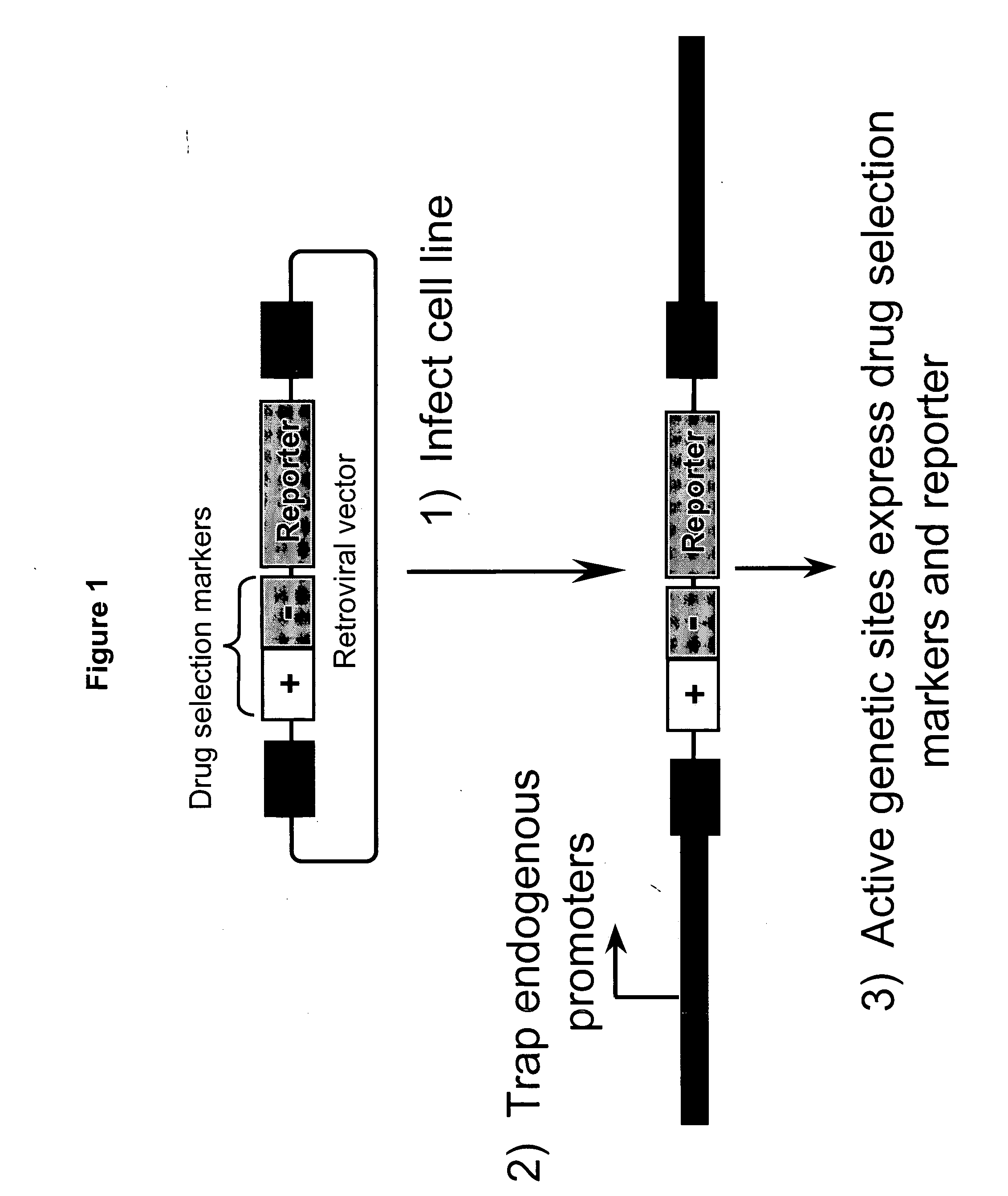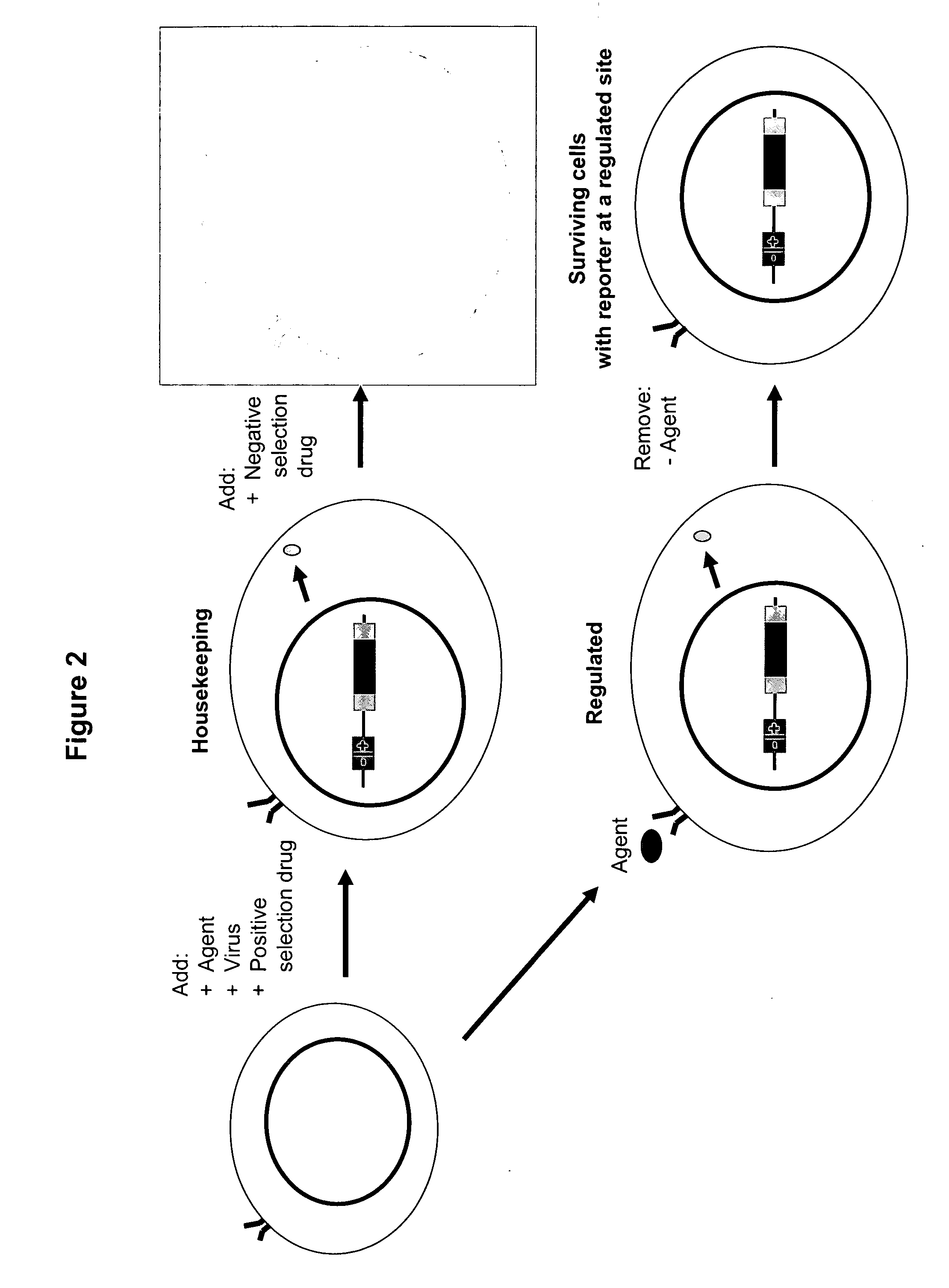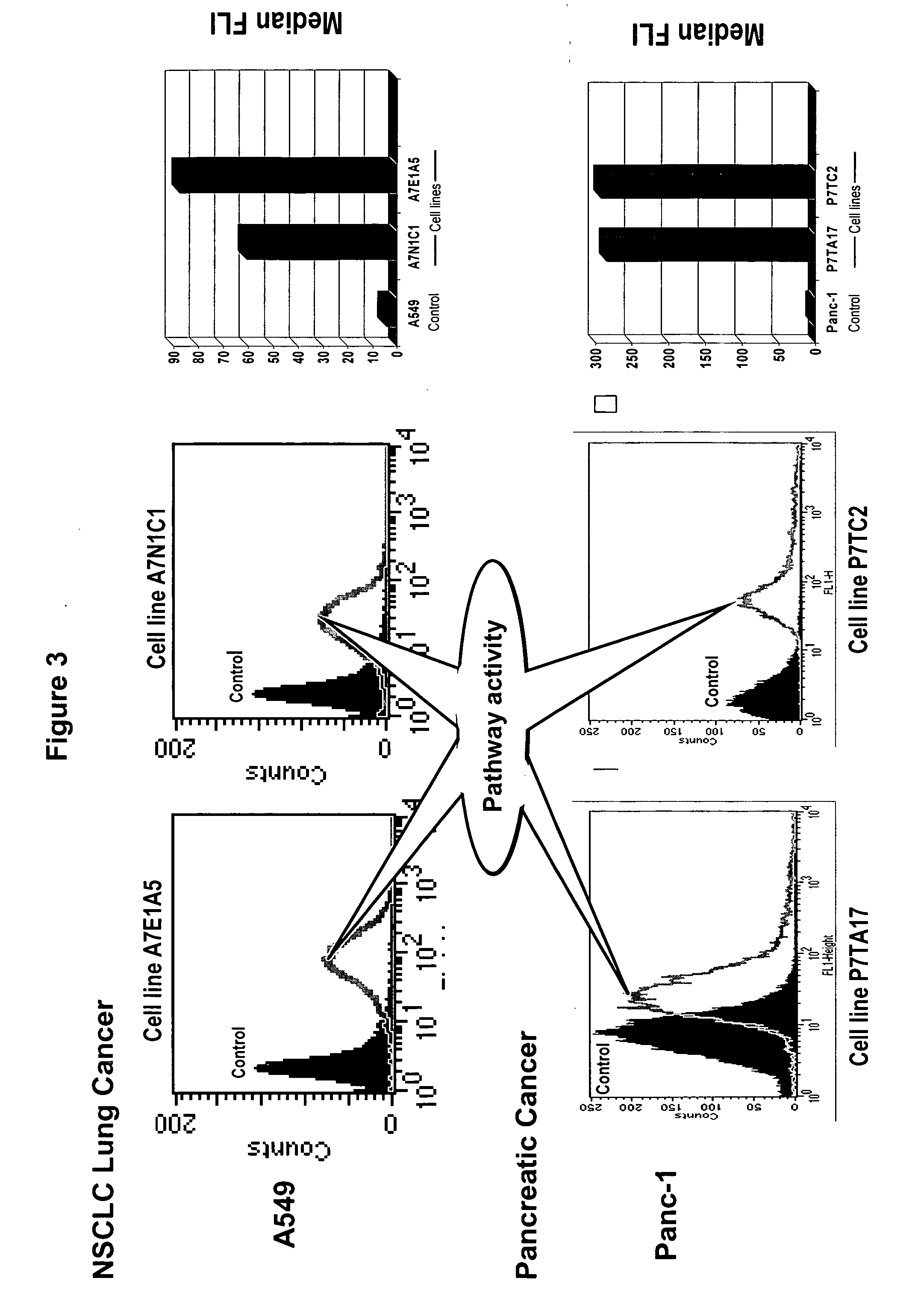Pancreatic cancer treatment using Na+/K+ ATPase inhibitors
a technology of atpase inhibitors and pancreatic cancer, which is applied in the direction of biocide, animal husbandry, carbohydrate active ingredients, etc., can solve the problems of the response of certain tumors to conventional chemotherapy, and achieve the effect of keeping the patient's compliance low and improving the patient's complian
- Summary
- Abstract
- Description
- Claims
- Application Information
AI Technical Summary
Benefits of technology
Problems solved by technology
Method used
Image
Examples
examples
[0323] The following examples are for illustrative purpose only, and should in no way be construed to be limiting in any respect of the claimed invention.
[0324] The ememplary cardiac glycosides used in following studies are referred to as BNC-1 and BNC-4.
[0325] BNC-1 is ouabain or g-Strophanthin (STRODIVAL®), which has been used for treating myocardial infarction. It is a colorless crystal with predicted IC50 of about 0.009-0.035 μg / mL and max. plasma concentration of about 0.03 μg / mL. According to the literature, its plasma half-life in human is about 20 hours, with a range of between 5-50 hours. Its common formulation is injectable. The typical dose for current indication (i.v.) is about 0.25 mg, up to 0.5 mg / day.
[0326] BNC-4 is proscillaridin (TALUSIN®), which has been approved for treating chronic cardiac insufficiency in Europe. It is a colorless crystal with predicted IC50 of about 0.002-0.008 μg / mL and max. plasma concentration of about 0.1 μg / mL. According to the literatu...
example i
Sentinel Line Plasmid Construction and Virus Preparation
[0328]FIG. 1 is a schematic drawing of the Sentinel Line promoter trap system, and its use in identifying regulated genetic sites and in reporting pathway activity. Briefly, the promoter-less selection markers (either positive or negative selection markers, or both) and reporter genes (such as beta-gal) are put in a retroviral vector (or other suitable vectors), which can be used to infect target cells. The randomly inserted retroviral vectors may be so positioned that an active upstream heterologous promoter may initiate the transcription and translation of the selectable markers and reporter gene(s). The expression of such selectable markers and / or reporter genes is indicative of active genetic sites in the particular host cell.
[0329] In one exemplary embodiment, the promoter trap vector BV7 was derived from retrovirus vector pQCXIX (BD Biosciences Clontech) by replacing sequence in between packaging signal (Psi+) and 3′ LT...
example ii
Sentinel Line Generation
[0331] Target cells were plated in 150 mm tissue culture dishes at a density of about 1×106 / plate. The following morning cells were infected with 250 μl of Bionaut Virus #7 (BV7) as prepared in Example I, and after 48 hr incubation, 20 μg / ml of phleomycin was added. 4 days later, media was changed to a reduced serum (2% FBS) DMEM to allow the cells to rest. 48 h later, ganciclovir (GCV) (0.4 μM, sigma) was added for 4 days (media was refreshed on day 2). One more round of phleomycin selection followed (20 μg / ml phleomycin for 3 days). Upon completion, media was changed to 20% FBS DMEM to facilitate the outgrowths of the clones. 10 days later, clones were picked and expanded for further analysis and screening.
[0332] Using this method, several Sentinel Lines were generated to report activity of genetic sites activated by hypoxia pathways (FIG. 3). These Sentinel lines were generated by transfecting A549 (NSCLC lung cancer) and Panc-1 (pancreatic cancer) cell ...
PUM
| Property | Measurement | Unit |
|---|---|---|
| Mass | aaaaa | aaaaa |
| Concentration | aaaaa | aaaaa |
| Density | aaaaa | aaaaa |
Abstract
Description
Claims
Application Information
 Login to View More
Login to View More - R&D
- Intellectual Property
- Life Sciences
- Materials
- Tech Scout
- Unparalleled Data Quality
- Higher Quality Content
- 60% Fewer Hallucinations
Browse by: Latest US Patents, China's latest patents, Technical Efficacy Thesaurus, Application Domain, Technology Topic, Popular Technical Reports.
© 2025 PatSnap. All rights reserved.Legal|Privacy policy|Modern Slavery Act Transparency Statement|Sitemap|About US| Contact US: help@patsnap.com



